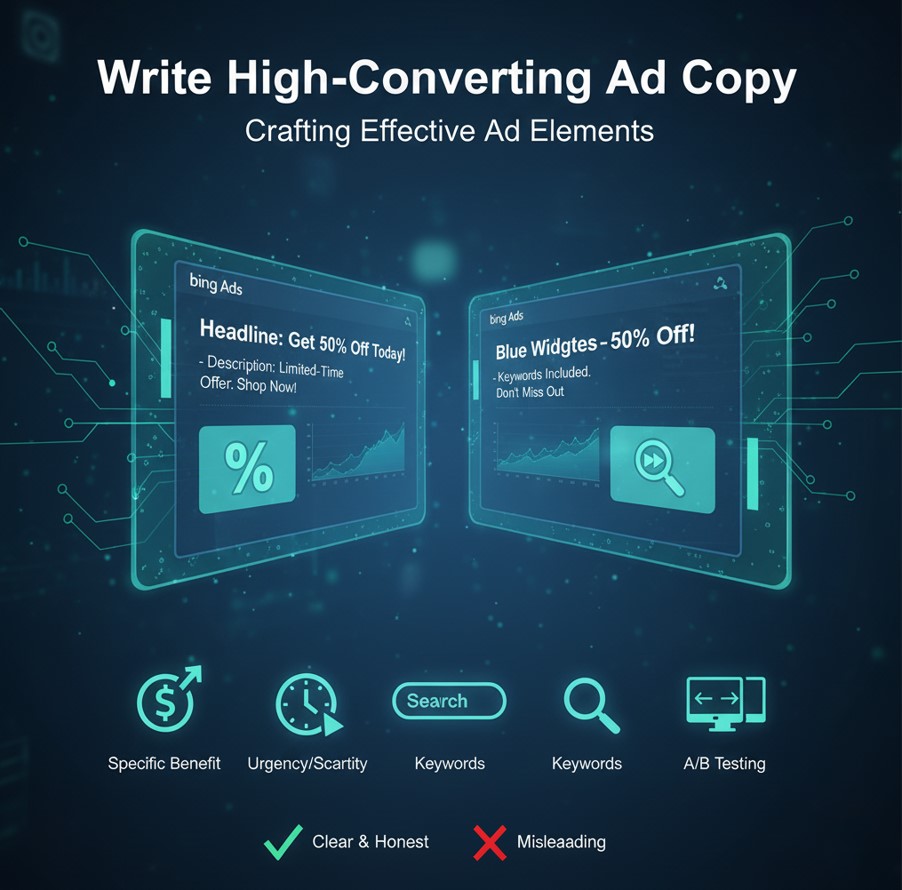
In the world of affiliate marketing, Google Ads often gets all the attention. But smart marketers know there’s another powerful, underutilized platform that can generate high-converting traffic at a lower cost: Bing Affiliate Marketing.
With over 1 billion unique monthly users across the Microsoft Search Network, Bing offers an untapped opportunity for affiliates willing to think beyond the obvious. If you’re looking to expand your reach, lower your ad costs, and scale your affiliate income, then learning how to run affiliate marketing with Bing Ads is a strategic move you shouldn’t ignore.
In this article, we’ll explore 10 proven strategies to succeed with Bing Affiliate Marketing, whether you’re a beginner or an experienced affiliate looking to diversify your traffic sources.
1. Understand the Bing Audience
Before you start any Bing Ads affiliate marketing campaign, it’s crucial to understand the platform’s user base.
Who uses Bing?
Bing users tend to be:
-
A bit older (35+ demographic)
-
Located in the United States, Canada, UK, and Australia
-
Using desktop devices (often default browsers on Windows machines)
-
Slightly more affluent than average online users
These user traits make Bing ideal for certain niches like software, finance, health, insurance, and B2B services. Matching your affiliate offers to the right audience is the first step toward success.
2. Choose High-Converting Affiliate Offers
The success of your Bing affiliate marketing campaign heavily depends on the offer you’re promoting.
Tips for choosing offers:
-
Pick offers with high EPC (earnings per click)
-
Choose evergreen niches like finance, health, education, or SaaS
-
Use affiliate networks like ClickBank, MaxBounty, CJ Affiliate, or PartnerStack
-
Ensure the offer has a clean, mobile-friendly landing page
Always check if your affiliate program allows paid traffic, especially on Bing. Violating terms can get you banned from networks.
3. Set Up Bing Ads the Right Way
Getting started with affiliate marketing with Bing Ads means properly setting up your Microsoft Ads (formerly Bing Ads) account.
Steps to follow:
-
Create a Microsoft Advertising account
-
Set up conversion tracking using UET tags (Universal Event Tracking)
-
Use a custom domain or tracking software to cloak and monitor affiliate links
-
Set up ad extensions like site links, callouts, and structured snippets to improve ad performance
Make sure your ads comply with Microsoft’s advertising policies. Some affiliate niches (like weight loss or crypto) may be restricted.
4. Use Keyword Research to Find Buying Intent
The right keywords can make or break your Bing Ads affiliate marketing campaign.
Focus on:
-
Long-tail keywords (e.g., “best VPN for Windows 11” instead of just “VPN”)
-
Commercial intent phrases (e.g., “buy,” “discount,” “coupon,” “free trial”)
-
Branded keywords if allowed (e.g., “NordVPN review” or “Shopify pricing plan”)
Use tools like Microsoft Keyword Planner, Ubersuggest, or Ahrefs to find relevant keywords with low competition and high intent.
5. Write High-Converting Ad Copy

In affiliate marketing with Bing Ads, your ad copy is your first (and maybe only) chance to capture attention.
Effective ad copy elements:
- Mention a specific benefit (“Get 50% Off Today”)
- Use urgency or scarcity (“Limited-Time Offer”)
- Include keywords in the headline and description
- Test multiple variations (A/B testing)
Be clear and honest—overpromising or misleading claims can get your ads disapproved and your account suspended.
6. Build or Use a Landing Page (Don’t Direct Link)
One of the biggest mistakes new affiliates make in Bing affiliate marketing is trying to direct link to the affiliate offer.
Microsoft is strict about direct linking, and many affiliate links get flagged or banned. Instead, use a bridge page or a pre-sell landing page.
Why use a landing page?
-
Improves ad approval rate
-
Increases conversion by warming up the visitor
-
Allows for better tracking and remarketing
-
Helps you build an email list for long-term growth
You can build landing pages using tools like ClickFunnels, Leadpages, or WordPress.
7. Track Everything and Optimize for ROI
Running blind campaigns is a recipe for wasted ad spend. Successful Bing affiliate marketing relies on detailed tracking.
What to track:
-
Conversion rate
-
Cost per conversion
-
ROI (Return on Investment)
-
Keyword performance
Use tracking software like Voluum, ClickMagick, or RedTrack to analyze your data. Cut low-performing keywords or ads and scale the winners.
8. Split Test Creatives and Landing Pages
Optimization is a never-ending process in affiliate marketing Bing ads campaigns. Always be testing.
A/B test:
-
Different headlines and descriptions
-
Call-to-action buttons on your landing page
-
Page layout and colors
-
Offers and funnels
Even small tweaks (like changing a CTA from “Get Access” to “Claim My Trial”) can lead to a 10-20% lift in conversions.
9. Use Retargeting to Recover Lost Traffic
Retargeting is one of the most effective yet underused strategies in Bing Ads affiliate marketing.
With Microsoft Ads, you can:
-
Retarget visitors who clicked your ad but didn’t convert
-
Show tailored messages or discounts to warm traffic
-
Bring users back to complete their purchase
Make sure you install the UET tracking tag on your site to build custom audiences. Retargeting is especially effective for high-ticket or multi-step offers.
10. Start Small, Then Scale Strategically
When diving into Bing affiliate marketing, don’t go all-in with your budget right away. Start small—test, learn, and scale what works.
Start with:
-
A daily budget of $20–$50
-
1–2 offers in a proven niche
-
5–10 ad variations and a small keyword set
Once you find profitable campaigns, increase your budget slowly, expand your keyword list, and experiment with broader match types or new offers.
Scaling too fast without data can destroy your ROI. Let your numbers guide your decisions.
Bonus Tip: Use Bing’s Lower CPC to Your Advantage
Compared to Google Ads, Bing Ads typically have 30–50% lower cost-per-click (CPC). This means:
-
More clicks for the same budget
-
Lower competition
-
Higher profit margins
This cost advantage makes Bing a perfect starting point for affiliate marketers on a budget—or anyone looking to improve ROI on paid traffic.
Final Thoughts: Is Bing Affiliate Marketing Worth It?
Absolutely. While most affiliates flock to Google, Facebook, or TikTok, Bing affiliate marketing offers a quieter, more affordable playing field with high-intent users who are ready to buy.
By combining smart keyword targeting, compelling ad copy, optimized landing pages, and careful tracking, you can turn Bing into a reliable revenue stream for your affiliate business.
And while strategies like video advertising on social platforms continue to gain popularity, Bing’s lower CPC and untapped audience make it an ideal platform for affiliates who want better control over targeting and budgets.
Whether you’re looking to diversify your traffic sources or lower your cost per acquisition, affiliate marketing with Bing Ads is a highly underrated strategy that deserves a spot in your marketing playbook.
Key Takeaways
-
Bing has a valuable, often overlooked user base that converts well.
-
Choosing the right offer and building proper landing pages are critical.
-
Split testing, tracking, and optimization separate the pros from amateurs.
-
Use Bing’s lower CPCs to maximize ROI on your affiliate marketing campaigns.
Ready to Launch Your Bing Affiliate Campaign?
Don’t wait for the competition to catch on. Take action now, and start building your first Bing affiliate marketing campaign using the strategies in this guide. With the right setup and a data-driven approach, your next profitable campaign could be just a few clicks away.
Learn more about: Google Shopping Ads Strategy: Optimize Feed & Boost ROAS


Leave a Reply